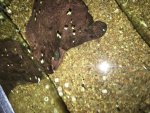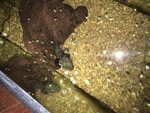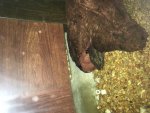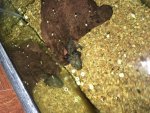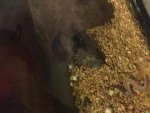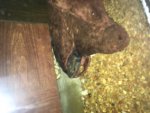Hello,
A while ago I fed my mudpuppy minnows from Petco because none of the night crawlers I usually feed him were available, which I'm certain was a big mistake on my part. Beginning around a few weeks ago (if not earlier) I've begun to notice smooth, cloudy white patches on his face. He rarely comes out of the hideout I provided for him unless I feed him so I'll post pictures when he's visible. The patches haven't appeared to have been bothering him (he's not rubbing or scratching them) but I have noticed his behavior is a little strange; he's gotten a little less active and sometimes he prefers to rest in his hideout with his tail end near the opening instead of his head. Recently I changed the water in an attempt to get rid of at least some of whatever is affecting him. Can anyone diagnose what this could be and provide solutions for treatment?
A while ago I fed my mudpuppy minnows from Petco because none of the night crawlers I usually feed him were available, which I'm certain was a big mistake on my part. Beginning around a few weeks ago (if not earlier) I've begun to notice smooth, cloudy white patches on his face. He rarely comes out of the hideout I provided for him unless I feed him so I'll post pictures when he's visible. The patches haven't appeared to have been bothering him (he's not rubbing or scratching them) but I have noticed his behavior is a little strange; he's gotten a little less active and sometimes he prefers to rest in his hideout with his tail end near the opening instead of his head. Recently I changed the water in an attempt to get rid of at least some of whatever is affecting him. Can anyone diagnose what this could be and provide solutions for treatment?


